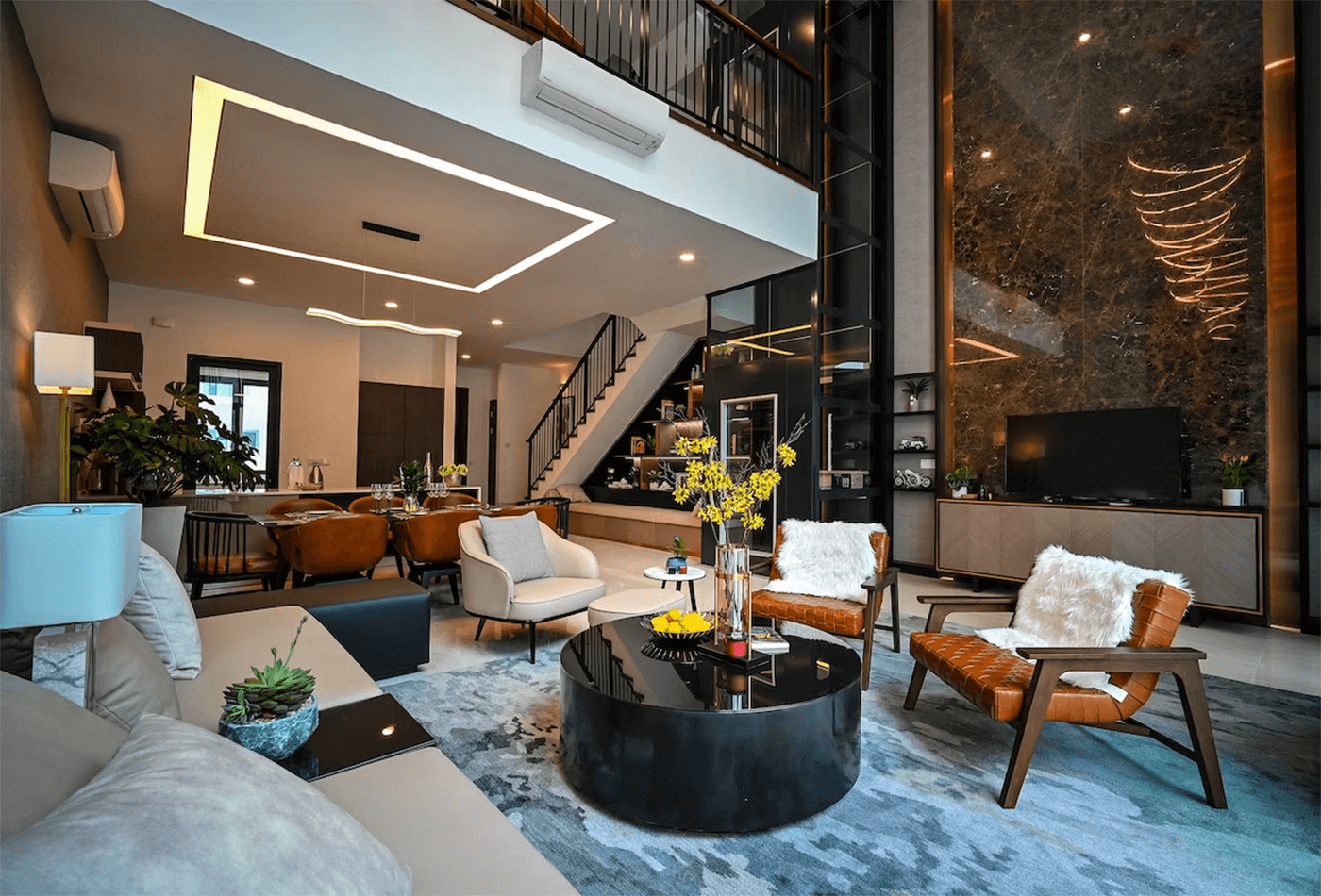With the rising awareness of environmental needs, reclaimed woods and recycled metals will definitely be one of the main decorating styles in the coming years, not only because of their environmental friendliness but also because of their speciality and texture that can be used in the interior.
As trends and predictions in home design emerge in 2024 and beyond, they will centre on the themes of sustainability, personal expression and wellbeing, with features such as green spaces and organic shapes that can bring nature into our homes.
Sustainability
With the changing society we are moving towards greater demand of sustainable designs to build homes. There are three main social trends can be applied here; we need to work harder, rest more restoratively and play more smilely; particularly, designers have started to incorporate such elements such as feng shui, jin zhe, romantic and caring factors to improve the well-being by using organic elements and natural light. The design towards sustainability is the key of modern times.
You can also observe the overlap between sustainability trends and biophilic design. Biophilic design revolves around the idea that bringing natural elements into interior space can help increase our connections to nature. Expect to see more indoor plants, more living green walls and more stone and wood in open floor plans that feature fewer barriers between indoor and outdoor space.
For the understated look of ‘sustainability’, tone down the green (because of its strong association with organic), without completely avoiding it. Use muted moss or sage as an accent colour in a simple, modern colour scheme, and you have clean and cool style. Or go all out with bold browns and deep blues to make a powerful contemporary design statement.
Open-Concept Layout
One of the classic home design trends over the past decades is the open floor plan, where the living room area that includes the dining and kitchen are reaches that blend smoothly into one another. This type of architectural design allows for the majority or complete removal of walls together with the related doorways between the living areas and the kitchen, resulting in a wide open space where natural light freely flows in and out of every view, making both the rooms and its occupants more visible, which leads to an increased use of natural lighting and decreased use of overhead and other artificial lighting.
But although these perceived benefits make it an attractive proposition to many home owners, others desire areas that are more clearly defined architecturally, both to provide some privacy and to offer more functional uses for different zones. Creative solutions are being found by interior designers for the need to isolate these spaces, with nooks, alcoves or more imaginative design solutions such as sliding metal screens or half-height perpendicular intersecting walls, to further weigh up these conflicting spaces.
And on the other hand, other residential design trends are encouraging the homeowner to slow down a little. First there are the soothing shades of green that remind us of nature. Then there are large expanses of emotionally resonant art that bring depth and drama to a living space.
Industrial Design
Industrial design is a professional discipline that formulates functionally elegant, ergonomically sound, and aesthetically pleasing (and hopefully valuable) designs that can be implemented in the innovations of the physical world that people can use in their daily life. Industrial design requires extensive skillsets, such as those came from fields in engineering design and product development through industrial engineering.
The rise of remote working has also led to a need for flexible spaces at home, which might be helped by convertible rooms that can go from bedroom to home office to workout space, at the flick of a switch. Space-saving multi-function rooms that can serve different needs at different times will also become more sought-after.
As people retreating into themselves, they have turned to biophilic design to reconnect with nature. Biophilic design is an interior design trend in which natural environments are brought into homes by way of organic materials, plants and indoor vistas of nature.
Given the growth of home design, experts must keep track of related trends and technologies. Only in this way will home owners be able to convert their living spaces into images of contemporary style that capture the nuances of modern life.
Personal Expression
Today’s interiors are far from bland, with numerous ways to create warm and welcoming spaces in the home. Palettes of soft Neutrals in natural tones is one approach; another popular option includes colour palettes of Sage greige earthy green and rustic gold that will bring warmth and contrast into modern homes.
In the 2020s, home design features a careful selection of self-expressive elements that interact in universally relatable ways with the forces of sustainability, wellness and innovation.
Many homeowners now prefer natural materials like stone or wood to decor their homes, choose furnishings to echo local cultural influences, and choose items that have more than one use – living rooms that double as libraries or office furniture that transforms into a dining table, for example. Another trend has been to reconfigure the use of space more flexibly – many now tear down walls for more open-concept functionality.


